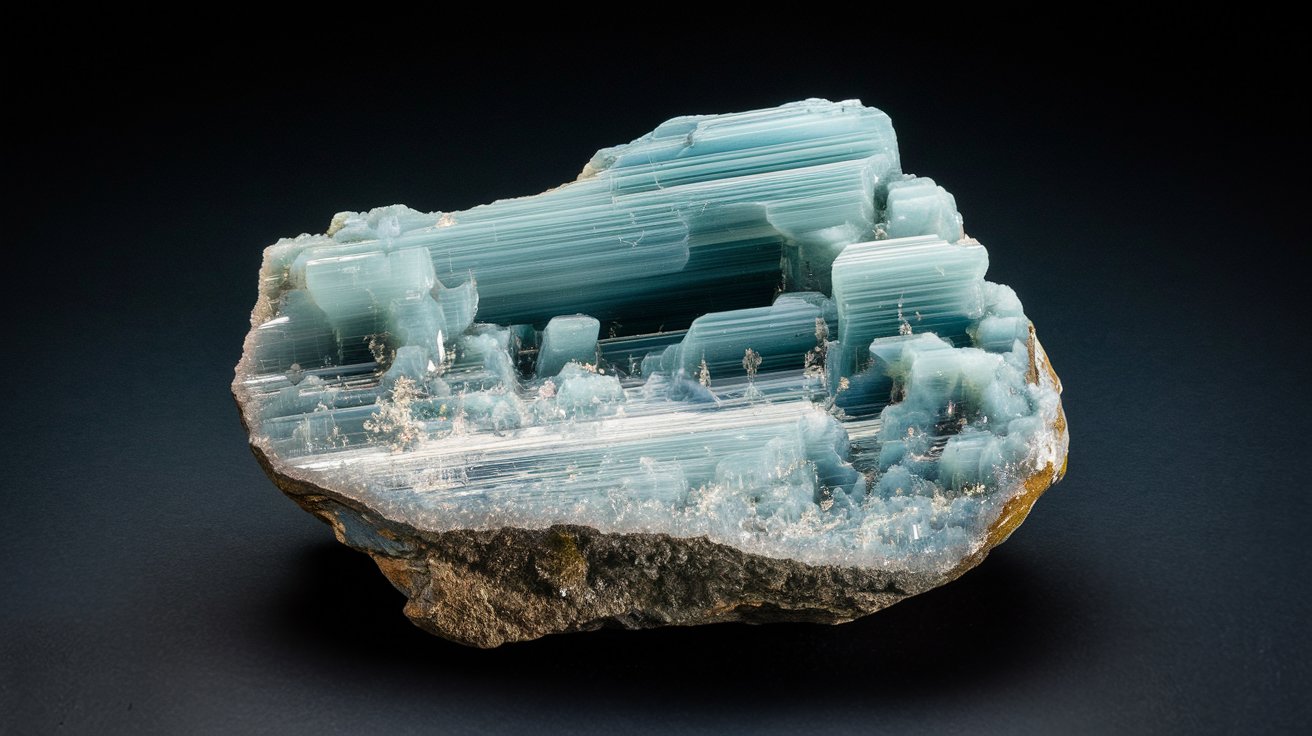
Pinalite is a rare mineral that often intrigues collectors and geologists alike. Found primarily in Mexico, this mineral boasts a unique combination of lead, tungsten, and oxygen. Its striking yellow color and crystal structure make it a standout in any collection. But what makes Pinalite truly fascinating? Pinalite forms under specific conditions, often in hydrothermal veins, which adds to its rarity. This mineral is not just a pretty face; it has a complex chemical makeup that scientists find captivating. Ready to dive into 30 intriguing facts about Pinalite? Let's get started!
Key Takeaways:
- Pinalite is a rare and fascinating mineral named after Pinal County in Arizona. It has unique physical properties, such as its bright yellow color and small crystal size, making it a favorite among collectors and researchers.
- Despite its challenges, Pinalite is highly sought after by collectors and has interesting uses in education and research. Its rarity, softness, and unique chemical composition make it a valuable and intriguing mineral to study and admire.
What is Pinalite?
Pinalite is a rare mineral that captures the interest of geologists and collectors alike. Its unique properties and formation make it a fascinating subject for study. Here are some intriguing facts about this mineral.
-
Pinalite is named after the Pinal County in Arizona, where it was first discovered.
-
This mineral is composed of lead, tungsten, and oxygen, with the chemical formula Pb3WO5Cl2.
-
Pinalite typically forms in oxidized zones of lead-tungsten deposits.
-
It was first described in 1985, making it a relatively recent discovery in the world of minerals.
-
The mineral is often found in association with other lead minerals like wulfenite and cerussite.
Physical Properties of Pinalite
Understanding the physical properties of Pinalite can help identify and differentiate it from other minerals. Here are some key characteristics.
-
Pinalite crystals are usually small, often less than 1 millimeter in size.
-
The mineral exhibits a bright yellow to orange color, making it visually striking.
-
It has a Mohs hardness of 3.5, which means it is relatively soft.
-
Pinalite has a vitreous to resinous luster, giving it a shiny appearance.
-
The mineral is transparent to translucent, allowing light to pass through it.
Where Can You Find Pinalite?
Pinalite is not just limited to Pinal County. It can be found in various locations around the world. Here are some notable places.
-
Apart from Arizona, Pinalite has been found in the Ojuela Mine in Mexico.
-
It is also present in the Tsumeb Mine in Namibia, a famous mineral locality.
-
Small quantities have been discovered in the Broken Hill Mine in Australia.
-
In Europe, Pinalite has been found in the Lavrion District of Greece.
-
The mineral is also present in the Långban Mine in Sweden.
Uses and Applications of Pinalite
While Pinalite is primarily a collector's mineral, it has some interesting uses and applications. Here are a few.
-
Due to its rarity, Pinalite is highly sought after by mineral collectors.
-
It is often used in educational settings to teach about lead-tungsten minerals.
-
Pinalite specimens are sometimes displayed in museums for public viewing.
-
The mineral can be used in research to understand the formation of lead-tungsten deposits.
-
Some jewelers use Pinalite in custom jewelry pieces, although this is rare due to its softness.
Interesting Facts About Pinalite
Pinalite has some unique and lesser-known aspects that make it even more fascinating. Here are some interesting tidbits.
-
Pinalite is often found in the form of tiny, well-formed crystals, making it a favorite among micromount collectors.
-
The mineral can fluoresce under ultraviolet light, showing a bright yellow color.
-
Pinalite is sometimes mistaken for other yellow minerals like mimetite or wulfenite.
-
It is one of the few minerals that contain both lead and tungsten, making it chemically unique.
-
The mineral's name is sometimes misspelled as "Pinalite" instead of "Pinalite."
Challenges in Collecting Pinalite
Collecting Pinalite comes with its own set of challenges. Here are some difficulties faced by collectors.
-
Due to its small crystal size, Pinalite specimens are hard to find and collect.
-
The mineral's softness makes it prone to damage during extraction and handling.
-
Pinalite is often found in remote or difficult-to-access locations.
-
High demand and low supply make Pinalite specimens expensive.
-
Identifying Pinalite requires specialized knowledge and equipment, adding to the challenge.
Pinalite: A Hidden Gem
Pinalite, with its vibrant yellow hue, stands out as a fascinating mineral. Found mainly in Mexico, this rare gem captures the interest of collectors and geologists alike. Its unique crystal structure and limited availability make it a prized possession for many.
Beyond its beauty, pinalite offers insights into geological processes. Formed in hydrothermal environments, it tells a story of Earth's dynamic nature. Its association with other minerals like wulfenite and vanadinite adds to its allure.
For those intrigued by mineralogy, pinalite is a must-know. Its rarity and striking appearance make it a standout in any collection. Whether you're a seasoned collector or a curious newbie, pinalite's charm is undeniable. Keep an eye out for this hidden gem, and you'll appreciate the wonders of our planet even more.
Frequently Asked Questions
Was this page helpful?
Our commitment to delivering trustworthy and engaging content is at the heart of what we do. Each fact on our site is contributed by real users like you, bringing a wealth of diverse insights and information. To ensure the highest standards of accuracy and reliability, our dedicated editors meticulously review each submission. This process guarantees that the facts we share are not only fascinating but also credible. Trust in our commitment to quality and authenticity as you explore and learn with us.
